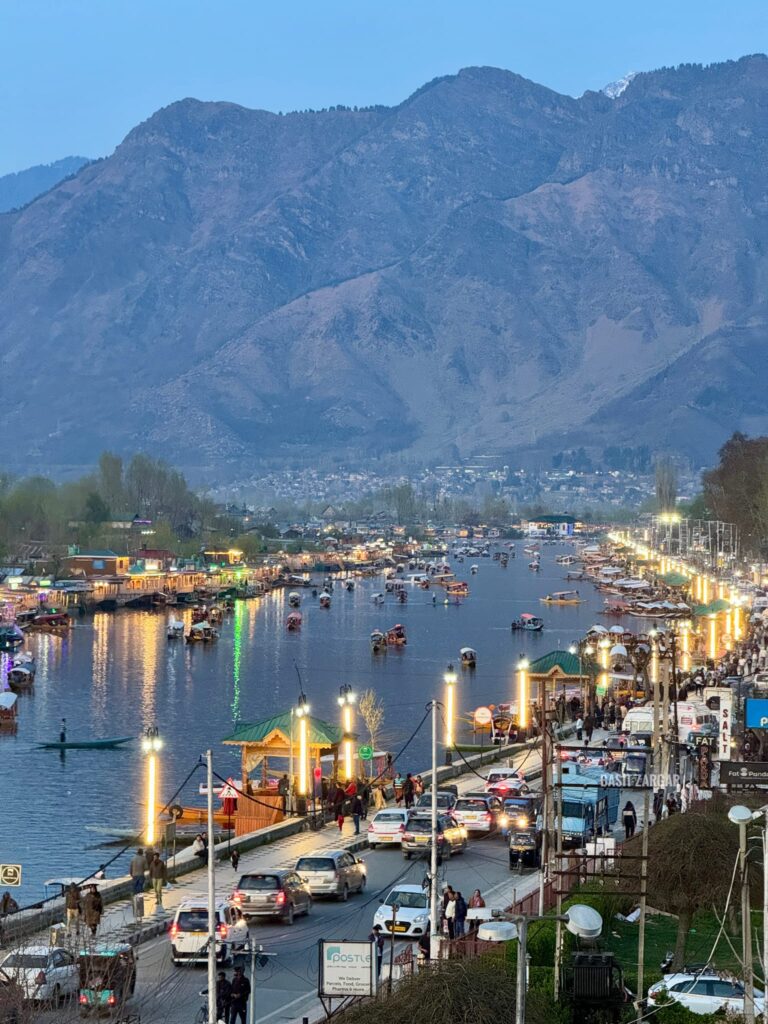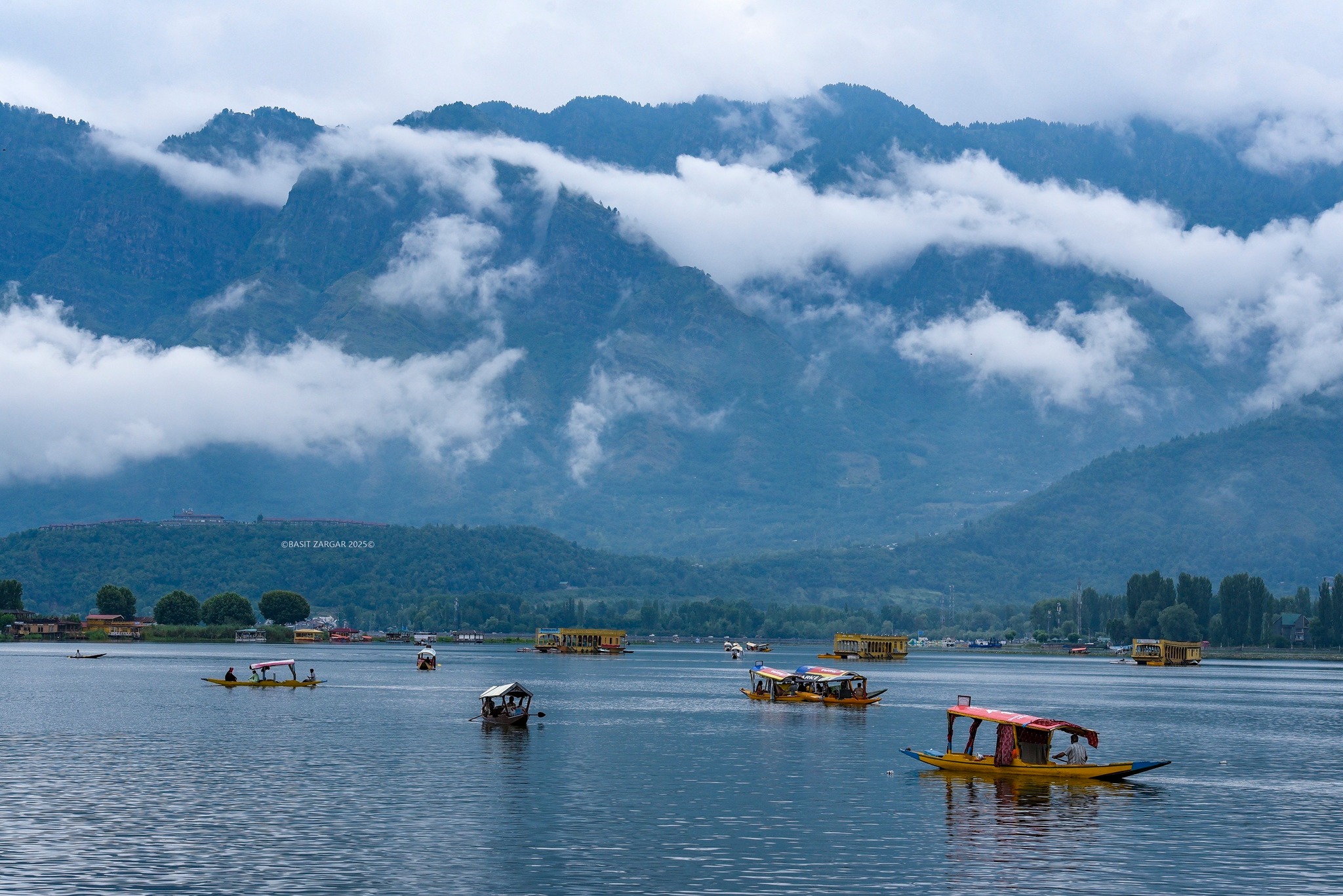From alpine treks to hidden monasteries, J&K’s secret sanctuaries are finally getting their spotlight.
By Ajaz Rashid
July in Jammu and Kashmir. The very name conjures images of verdant valleys, snow-dusted peaks, and the gentle murmur of flowing rivers. For decades, this month has marked the zenith of the tourism season, a vibrant period injecting vital economic energy into the region. However, the narrative of tourism in J&K has always been intertwined with complexities – geopolitical sensitivities, infrastructure limitations, and the ever-present dance with nature’s unpredictable moods. Yet, in the face of these challenges, a resilient spirit prevails, pushing stakeholders to reimagine and reinvent the tourism sector, charting new paths towards sustainable growth and diversification. This July offers a crucial lens through which to examine these evolving trends, the hurdles that remain, and the innovative initiatives shaping the future of travel in this captivating land.
Venturing Beyond the Familiar
For too long, the tourism map of J&K has been dominated by a few iconic destinations: Srinagar’s Dal Lake, Gulmarg’s meadows, and Pahalgam’s valleys. While these jewels retain their timeless charm, a growing segment of travelers seeks experiences beyond the well-trodden paths. This shift has spurred a welcome focus on developing offbeat destinations, unlocking the hidden treasures scattered across the region’s diverse landscapes.
“The discerning traveler of today is looking for authenticity and unique experiences,” explains Tariq Ahmad, a veteran adventure tour operator based in Srinagar. “They want to trek through pristine alpine meadows in Kishtwar, explore the Buddhist monasteries of Ladakh (now a separate UT but historically linked and often part of itineraries), or go white-water rafting in the rapids of the Chenab. J&K has immense untapped potential in these areas.”
Indeed, districts like Gurez, Lolab Valley, and Bhaderwah are gradually emerging from the shadows, their breathtaking beauty and tranquil environments attracting adventure enthusiasts and those seeking solace away from the crowds. Gurez, with its stunning views of the Harmukh range and the Kishanganga River, is witnessing a slow but steady influx of trekkers and nature lovers. Lolab Valley, often referred to as ‘the valley of love,’ offers serene landscapes, dense forests, and opportunities for birdwatching and camping. Bhaderwah, with its lush green meadows and opportunities for paragliding and mountaineering, is positioning itself as an adventure hub.
The government, recognizing this burgeoning interest, has begun investing in improving infrastructure in these lesser-known areas. This includes upgrading roads, establishing basic amenities, and promoting these destinations through targeted campaigns. Adventure tourism, in particular, is gaining traction. From challenging treks in the Himalayas to exhilarating water sports and the thrill of exploring rugged terrains on mountain bikes, J&K offers a diverse playground for adrenaline junkies. Local entrepreneurs are stepping up to provide specialized services, including certified guides, quality equipment rentals, and well-planned itineraries that prioritize safety and environmental responsibility.
Homestays and Immersive Local Experiences
Beyond the allure of picturesque landscapes, a growing number of tourists are seeking authentic cultural immersion. This demand has fueled the growth of the homestay sector in J&K, offering travelers a unique opportunity to experience the local way of life, savor traditional cuisine, and connect with the warmth and hospitality of the Kashmiri people.
“Staying in a homestay is a completely different experience compared to a hotel,” says Devika Menon, a tourist from Delhi who recently stayed at a homestay in Kashmir. “You get to interact with the family, learn about their traditions, and eat home-cooked meals. It feels more like being a guest than just a tourist.”

Homestays not only provide a more intimate travel experience but also contribute directly to the local economy, empowering communities in remote areas. Families can earn a livelihood by opening their homes to tourists, often showcasing local crafts, agricultural practices, and cultural performances.
The J&K government has actively promoted the homestay concept through initiatives that provide training, financial assistance for infrastructure development, and marketing support to local homeowners. This has led to a significant increase in the number of registered homestays across the region, offering a diverse range of accommodation options, from traditional Kashmiri houses to cozy mountain cottages.
“Homestays are a crucial component of sustainable tourism strategy,” emphasizes Yousuf Shafi, a HomeStay owner. “They not only offer a unique experience for tourists but also ensure that the benefits of tourism reach the grassroots level, fostering economic empowerment and preserving local culture.”
The rise of experiential tourism is also evident in the increasing popularity of activities such as cooking classes featuring traditional Kashmiri cuisine, guided tours of local artisan workshops, and participation in agricultural activities. Tourists are eager to engage with the local culture in a meaningful way, moving beyond mere sightseeing to actively participate in the daily life of the region.
Sustainable Tourism
As J&K’s tourism sector expands, the need for sustainable practices has become paramount. The region’s fragile ecosystem, characterized by pristine lakes, alpine meadows, and dense forests, is vulnerable to the impacts of unchecked tourism. Recognizing this, stakeholders are increasingly focusing on responsible tourism initiatives that minimize environmental damage and promote conservation.
“Sustainability is not just a buzzword; it’s the only way forward for tourism in J&K,” asserts Kunal Sharma, an environmentalist working on sustainable tourism projects. “We need to ensure that tourism activities do not deplete our natural resources, pollute our environment, or negatively impact local communities.”
Efforts towards sustainable tourism include promoting eco-friendly accommodation options, encouraging waste management and recycling practices, and raising awareness among tourists and local communities about the importance of conservation. Restrictions on single-use plastics in certain tourist areas and initiatives to clean up popular trekking trails are also gaining momentum.
The carrying capacity of popular destinations is also being assessed to prevent overcrowding and ensure the long-term health of the environment. This may involve regulating the number of visitors allowed in certain areas during peak season and promoting less crowded alternatives.
Furthermore, involving local communities in conservation efforts is crucial for the success of sustainable tourism initiatives. Eco-tourism projects that provide livelihood opportunities for local residents through nature-based tourism, such as guiding, nature interpretation, and managing community-owned eco-lodges, are being encouraged. “We believe that local communities are the best custodians of their natural environment,” Kunal
Seasonal Challenge
While July typically marks peak tourism season, the arrival of the monsoon can present a unique set of challenges. Heavy rainfall can lead to landslides, road closures, and disruptions in transportation, particularly in the hilly regions of Jammu and Kashmir.
“The monsoon is always a factor we need to consider during the summer months,” explains a hotelier in Patnitop. “We need to be prepared for potential disruptions and ensure the safety of our guests.”
Tour operators and hoteliers closely monitor weather forecasts and have contingency plans in place to deal with monsoon-related disruptions. This may include alternative routes, temporary relocation of tourists to safer areas, and providing timely updates on weather conditions.
However, the monsoon also brings its own unique charm to the landscape. The rains rejuvenate the vegetation, turning the valleys into lush green carpets. Waterfalls swell with gushing water, and the air becomes fresh and clean. Some adventure activities, such as white-water rafting, can even be enhanced by the increased water flow during the monsoon.
“While the monsoon can pose logistical challenges, it also unveils a different, equally beautiful side of J&K,” says Shoaib Ahmad, a nature guide who conducts tours during the monsoon season. “The landscapes become incredibly vibrant, and there’s a certain magic in experiencing the region during the rains.”

Some niche tourism segments, such as wellness retreats and photography tours, can even thrive during the monsoon, capitalizing on the serene atmosphere and dramatic skies.
The Voices of Experience
To gain a deeper understanding of the evolving tourism landscape in J&K, conversations with those directly involved provide invaluable insights.
“We have seen a significant shift in tourist preferences in recent years,” says Yaseen Sheikh, a tour operator based in Srinagar with over two decades of experience. “Earlier, the focus was primarily on leisure tourism to established destinations. Now, there’s a growing demand for adventure activities, cultural experiences, and offbeat locations. We are adapting our itineraries and services to cater to these new trends.”
Tourists themselves offer a diverse range of perspectives. “I came to Kashmir seeking peace and tranquility away from the hustle and bustle of city life,” says Parker, a tourist from the UK who was exploring the Bangus Valley. “The natural beauty here is simply breathtaking, and the hospitality of the local people is truly heartwarming.”

Leave a Reply